This month’s history blog posts have covered a range of different topics, time periods, and ideas. Below is a round of a few of the posts I have really enjoyed!
This month on his blog Matt Lewis has been discussing Richard the III, both his coronation, and in a very intriguing post Shakespeare’s portrayal of the monarch. He argues that Shakespeare’s play was in fact not about King Richard, a convenient villain, but instead was a veiled warning to Queen Elizabeth about the dangers of unsecured succession and the plotting of her adviser Robert Cecil.
Families, Living Spaces and Public Spaces
Spitalfields Lost created a wonderful visual trip down memory lane displaying a range of photographs and images of lost Spitalfields and asked the thought-provoking question about the changing nature of cities within resident’s life-times.
At the Pirate Omnibus Simon Abernethy has provided an interesting look at the politics of gender on the London Underground. From the difficulties of smoking carriages to outrages over ‘Mammoth’ bags being carried on the tube Abernethy shows us what really got people’s goat when they travelled on the tube. (This is particularly fascinating for those like myself who commute on the tube regularly)..
Susan Cook at the Journal of Victorian Culture Online, explored another set of images, this time of Victorian motherhood. She considers the ideas of effacement and exposure in images of Victorian mothers and looks at the way in images of shrouded mothers and breastfeeding mothers might share similar themes.
On her new blog Joanne Bailey has been discussing eighteenth and nineteenth century sailors returning home to their families. The motif of the sailor in the arms of his family, and particularly his loving children, was a popular one and was reflected in images and indeed the words of sailors themselves.
Food and Agriculture
Natalie Bennett over at Philobiblon provides an interesting summary of Food in Medieval England: Diet and Nutrition. She highlights the aspects of medieval food production that relate to our own concerns about sustainable agriculture and meat production, and notes that certain medieval beers were “lyke wash as pygges had wrestled dryn”.
Over at the Recipes Project Laurence Totelin delved into the ancient history of curds and whey . Looking at the use of seal rennet in making cheese and the connections between curdling cheese and the formation of the foetus in the womb.
Academia and Learning
The Renaissance Mathematicus has this month revealed the interesting story of the life of John Dee and how England in the early sixteenth-century was a ‘mathematical desert’ where mathematics was regarded with suspicion and disdain.
Medicine and Mortality
 On the History of Medicine in Ireland blog this month Dr Anne MacLellan has provided an intimate account of dealing with the Spanish Flu, seen through the eyes of a young medical student Dorothy Stopford. The account shows a personal response to the loss of close friends and to dealing with the death of so many young adults in hospital.
On the History of Medicine in Ireland blog this month Dr Anne MacLellan has provided an intimate account of dealing with the Spanish Flu, seen through the eyes of a young medical student Dorothy Stopford. The account shows a personal response to the loss of close friends and to dealing with the death of so many young adults in hospital.
This post could also have been grouped under the living spaces section, but Lucinda Matthew-Jones’s moving discussion of obituaries for fallen soldiers from Tonybee Hall also strongly evoked the mortality and loss of the First World War. She considers both the relationship a historian has with sources like this, and the way in which the deaths of their fellows affected those who wrote the obituaries. As one obituary writer sadly noted: ‘But the measure of our loss, is in reality, the measure of our reply. All we loved is in the dust: all we loved has laid it there’
Criminality, Policing and Disorder
Several blogs this month have been talking about crime and disorder here are just a few …
Matthew De Cloedt told us all about arson and attempted robbery at Sir Hans Sloan’s house, the quick and calm actions of Sloane’s wife saved her family, servants and house and as a bonus foiled the burglar’s devious plan.
Rachel Griffin has been describing the birth of detectives in the Victorian Metropolitan police. Following the gruesome murder of Jane Jones by her lover and husband Daniel Good, poor unfortunate Constable Gardiner found himself locked in a stable with her dismembered body. The embarrassment of the episode led to the creation of the Detective Department which until 1878 investigated murders, frauds and theft.
Andrew Heath at the University of Sheffield’s History Matters blog looks at the ways in which the Draft Riots of 1863 have been remembered or overlooked in film. He also considers the racial hatred that formed a central element of this turbulent era in New York’s history.
Crime was also a theme on this blog, where I looked at a complicated case of suspected murder by coffee and cantharides. The use of a potent poison and aphrodisiac in this case was not straight forward and medical experts and others waded in to discuss how Spanish Flies worked, how long their effects took to kill someone, and whether or not the victim was suffering from a venereal disease.
History from Below
Many of these posts focus on ‘history from below’, which leads nicely to our final set of posts. This month the Many-headed Monster has hosted an on-line symposium discussing the future of this historical approach. They have looked at many different aspects of this including global histories from below, Landscape history, and the place of the home, and who is ‘below’. This is a historical approach and methodology that is still very much alive and has much more to offer.
Samantha Shave’s piece on history for below for the Many-headed Monster links in nicely with the final piece in this round-up from Richard Blakemore at HistoryWomble who also debates the issue of who history is written for and considers the relative merits of Open Access, particularly looking at how it has an impact on early career researchers.
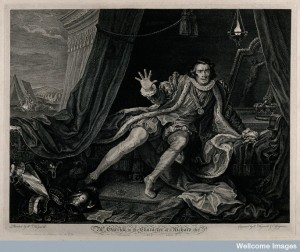
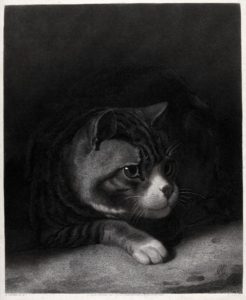
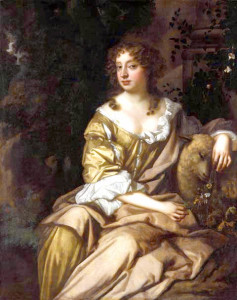
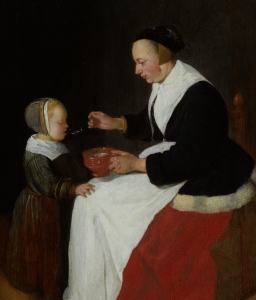
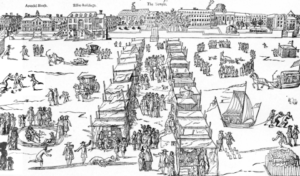
Many thanks for the links to our online symposium, Jen. This looks like a great Carnivaleque and I’ll be gradually working my way through the links over the next few days. It’s always refreshing to get a dose of more modern stuff, such as Andrew Heath’s piece on the 1863 draft riots, alongside the early modern fare.
Thanks Brodie, I’m just sorry I didn’t link to all of the pieces – such a great symposium – but I’m hoping once people find their way over they will work through all of the blogs.